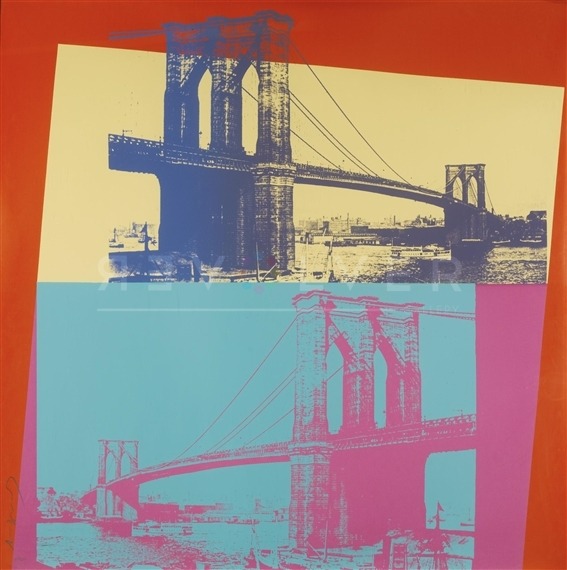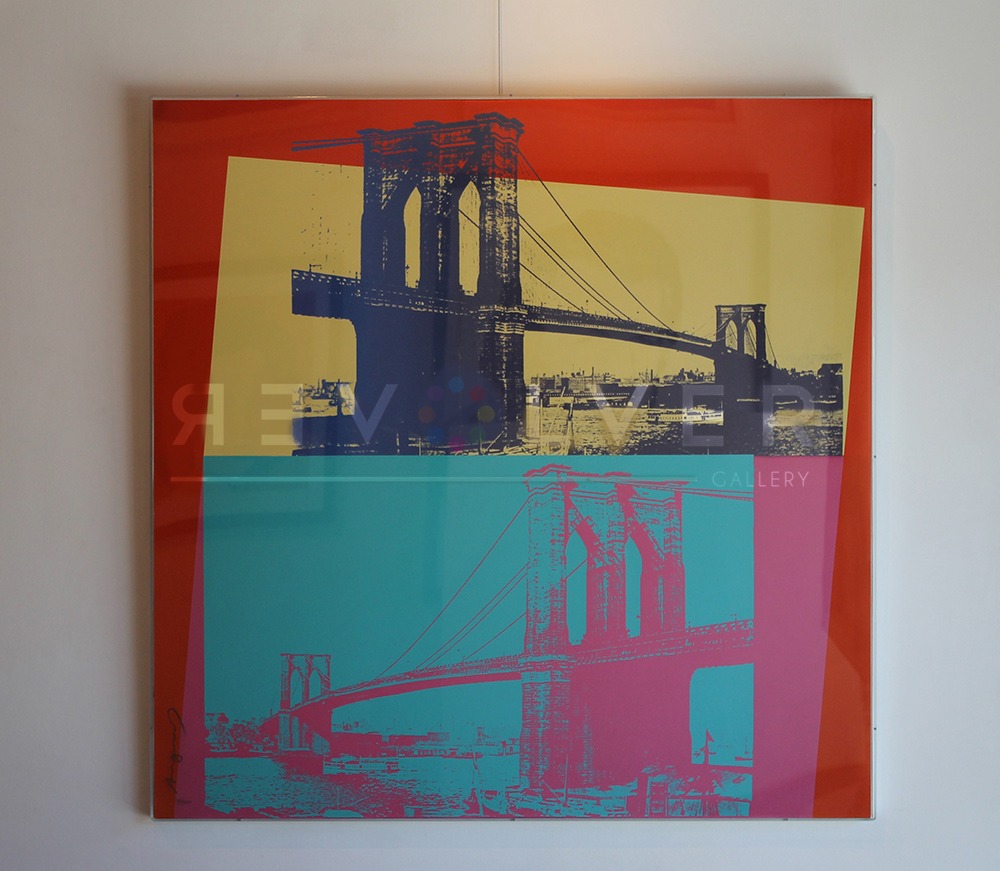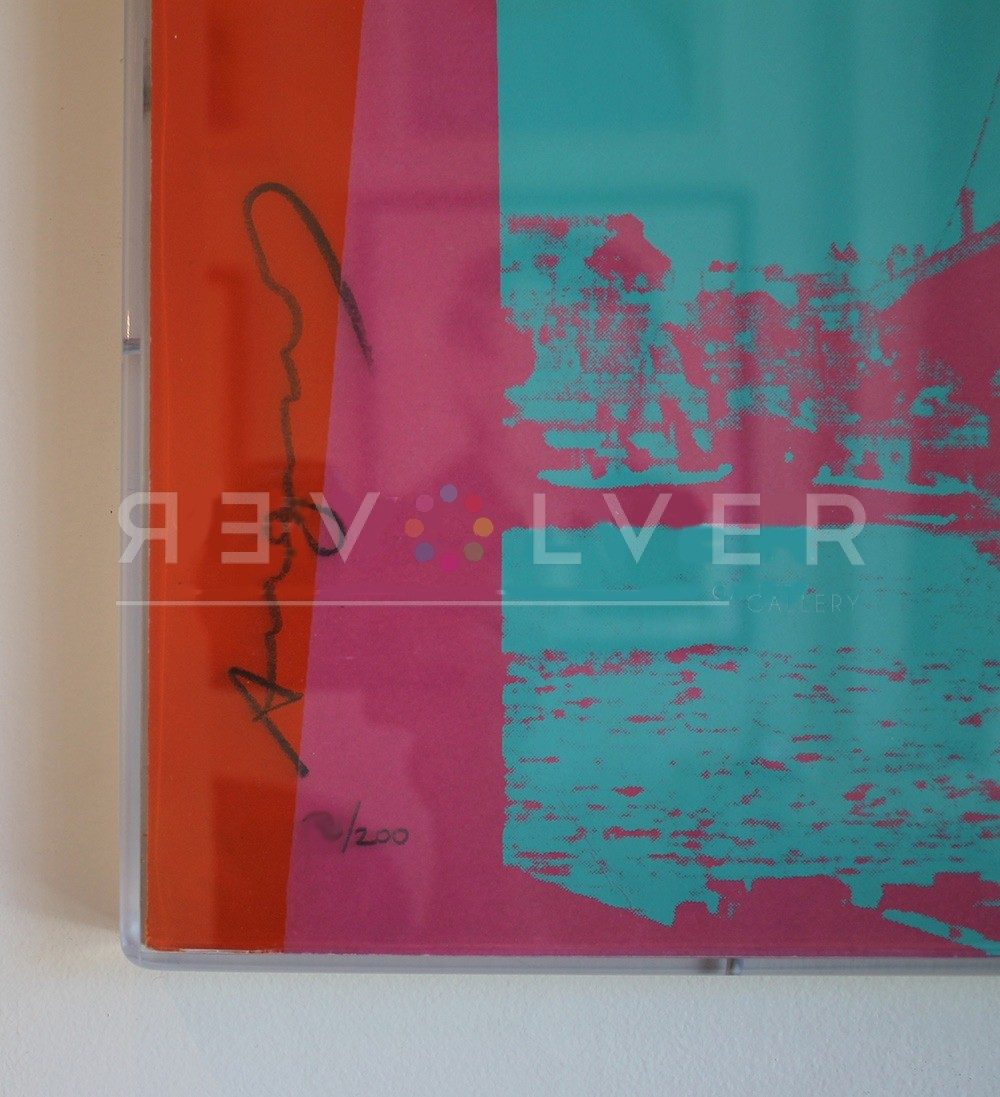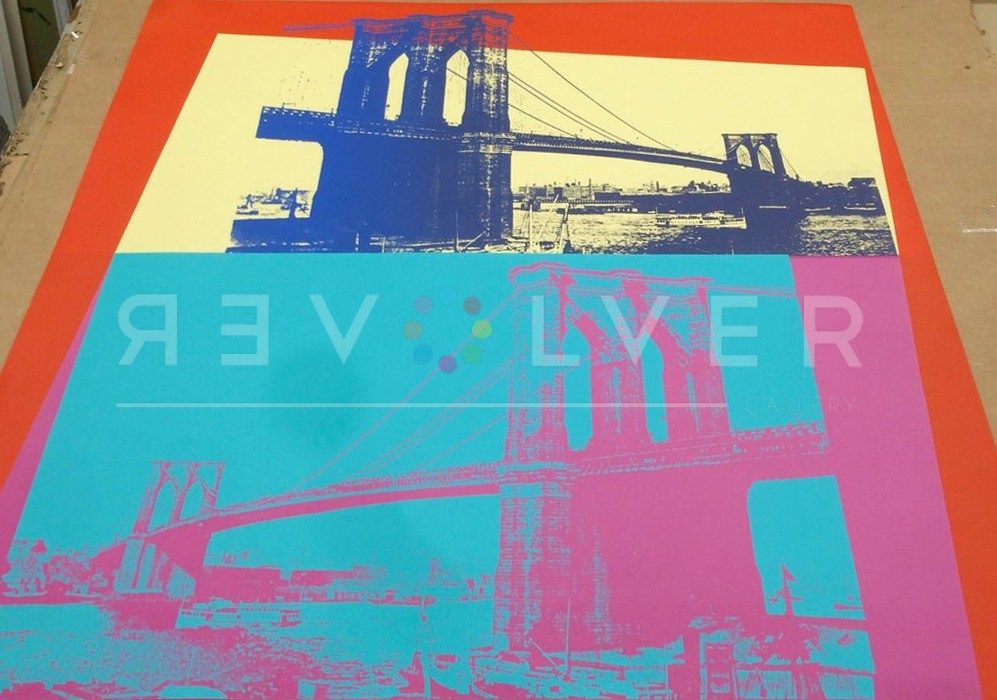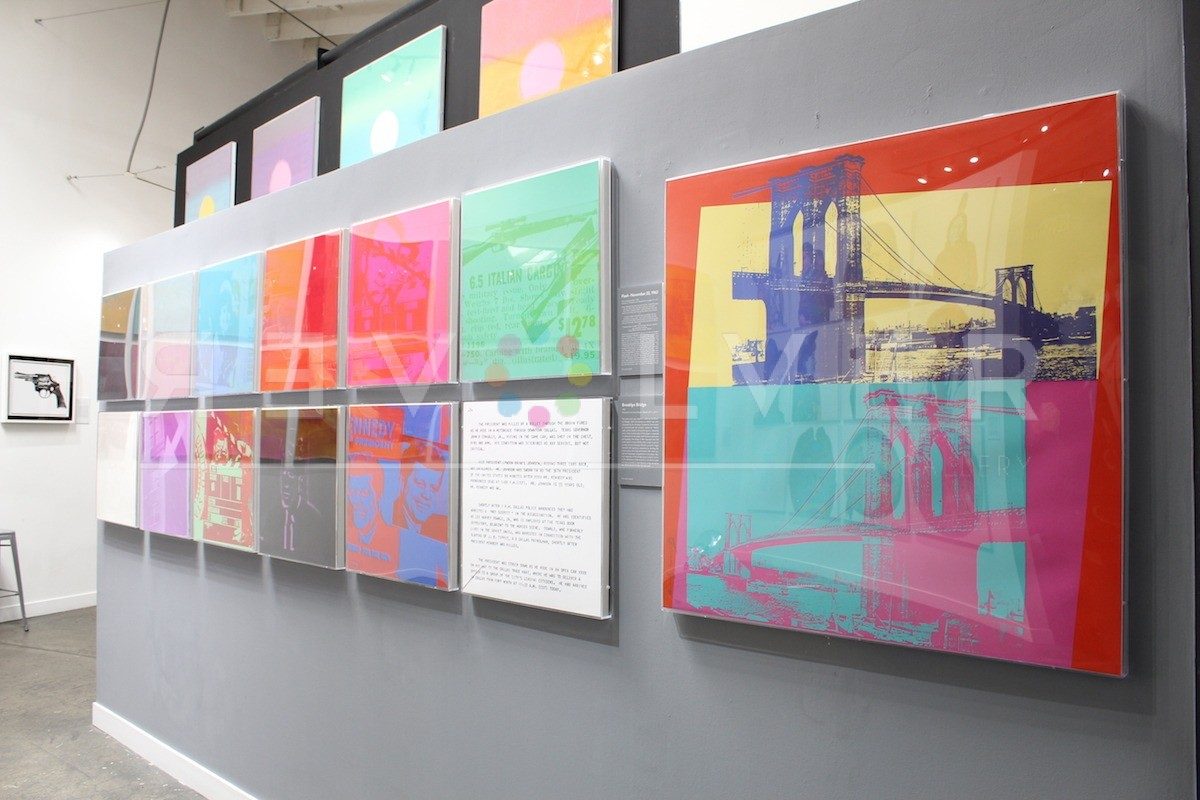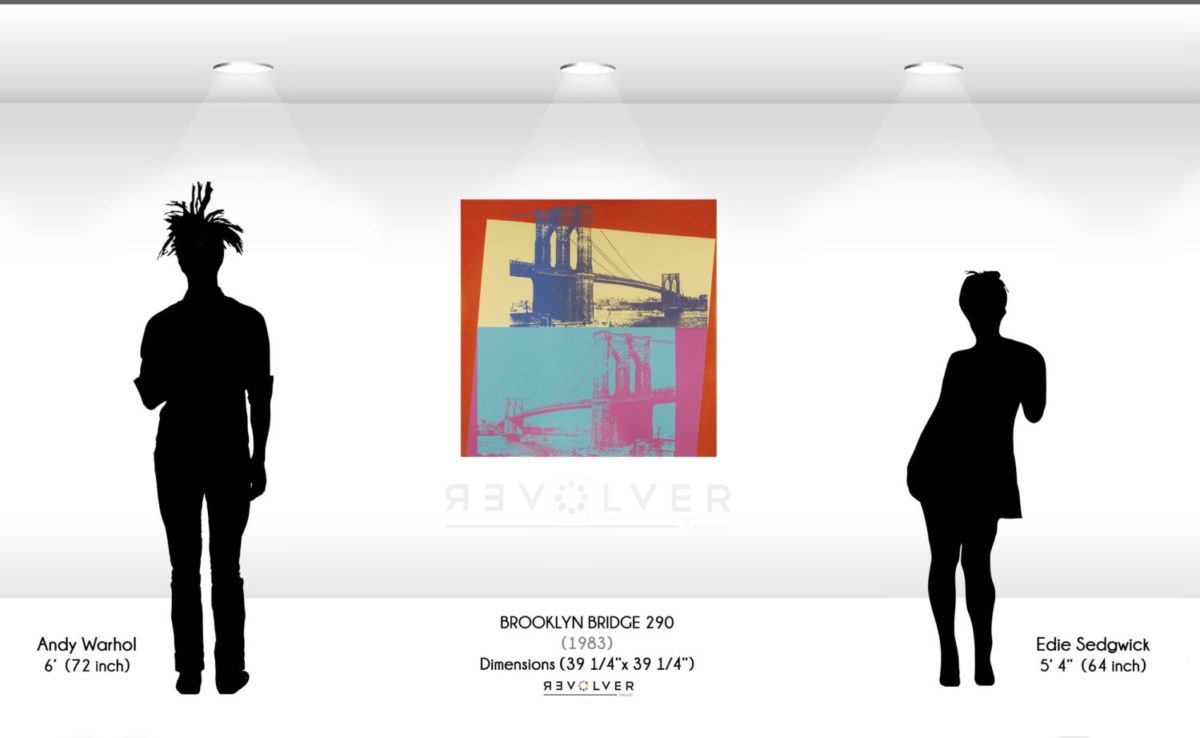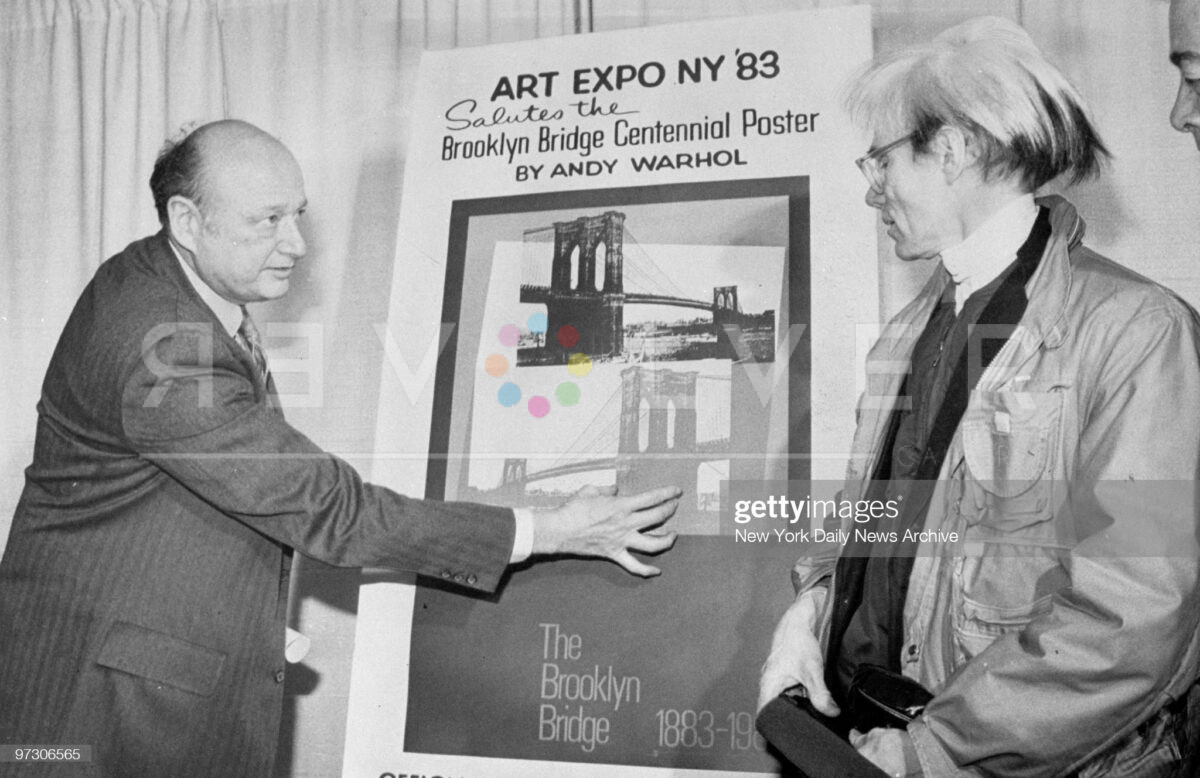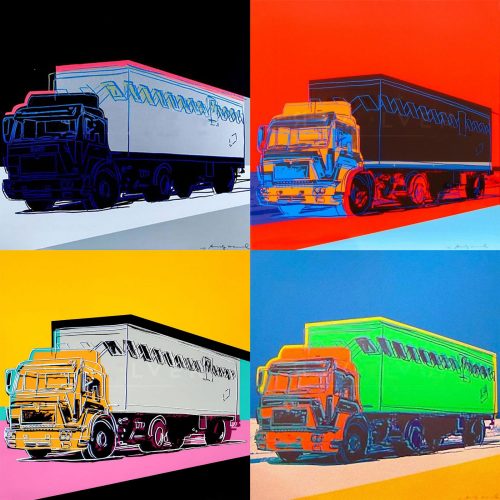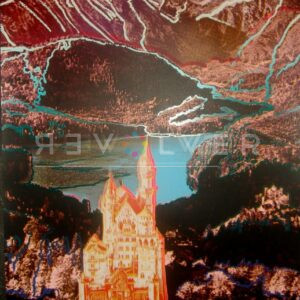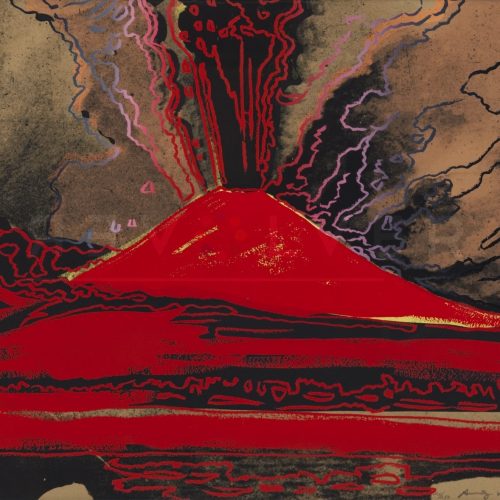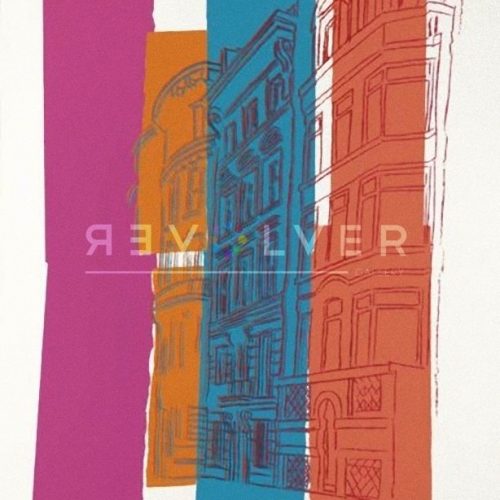Brooklyn Bridge 290 by Andy Warhol is a 1983 screenprint that puts the *pop* in Pop Art. This print was created by the artist at the request of the Brooklyn Bridge Centennial Commission to commemorate the 100th anniversary of the now-iconic architectural staple.
Although these days, the iconic Brooklyn Bridge has been photographed and reproduced countless times, Warhol’s iteration stands alone. With his signature color-blocking style, Warhol employs the use of bold colors such as red, blue, green and black, layering colors like candy flavors and creating a three-dimensional aesthetic. Even through the vibrant, film-like aura, the finer details of the Brooklyn Bridge captivate onlookers and contrast with the architectural behemoth.
In the print, Warhol’s depiction of the bridge gives a playful humor to the celebration of the structure in his distinct style. Moreover, it captures the essence of Warhol’s lifelong love affair with New York City. Adding to its personal and collage-like quality, Warhol reverses the image of the bridge, stacking the mirror images atop one another. This printing technique, aesthetically atypical for the artist, brings out Warhol’s surrealistic urges and highlights the offset perspective of the Bridge that makes it appear to go on forever. Especially for lovers of Andy Warhol, Brooklyn Bridge 290 is a picture of New York City through the artist’s eyes: bold, strong, and beautifully unique.
Warhol decided to use an offset printing technique for Brooklyn Bridge. Although we see color blocking in many other works, we are introduced to a more complicated offsetting of the subject in the print. The bridge is printed in such a way that it jets off into the distance, where it’s beginning and ending are ambiguous. The print is different from any standard photograph of the Brooklyn Bridge. The color and composition in Warhol’s work brings a surrealism to the mundane subject, which has been catalogued thousands of times by thousands of artists. Warhol’s take on the bridge is nothing less than Pop, and stands as an excessively Warholian image.
Andy Warhol, born into the American working class by Carpatho-Rusyn immigrants, was undoubtedly shaped in his artistic endeavors by his upbringing. After leaving Pittsburgh for NYC, the Pioneer of Pop Art made a name for himself by recreating some of the commonly-consumed items and images that might characterize working class life. Though his interests continued to evolve into the celebrity realm, Warhol remained until his death, spellbound by the culture of the Great Melting Pot. Home to innumerable dream-chasing, first-generation Americans like himself, Warhol believed in the New York people, a people of spirits as stalwart as the Brooklyn Bridge.
Photo credit: Mayor Ed Koch and Andy Warhol at the unveiling of Warhol’s Brooklyn Bridge Centennnial poster at the New York Coliseum. (Photo by Gene Kappock/NY Daily News Archive via Getty Images)

